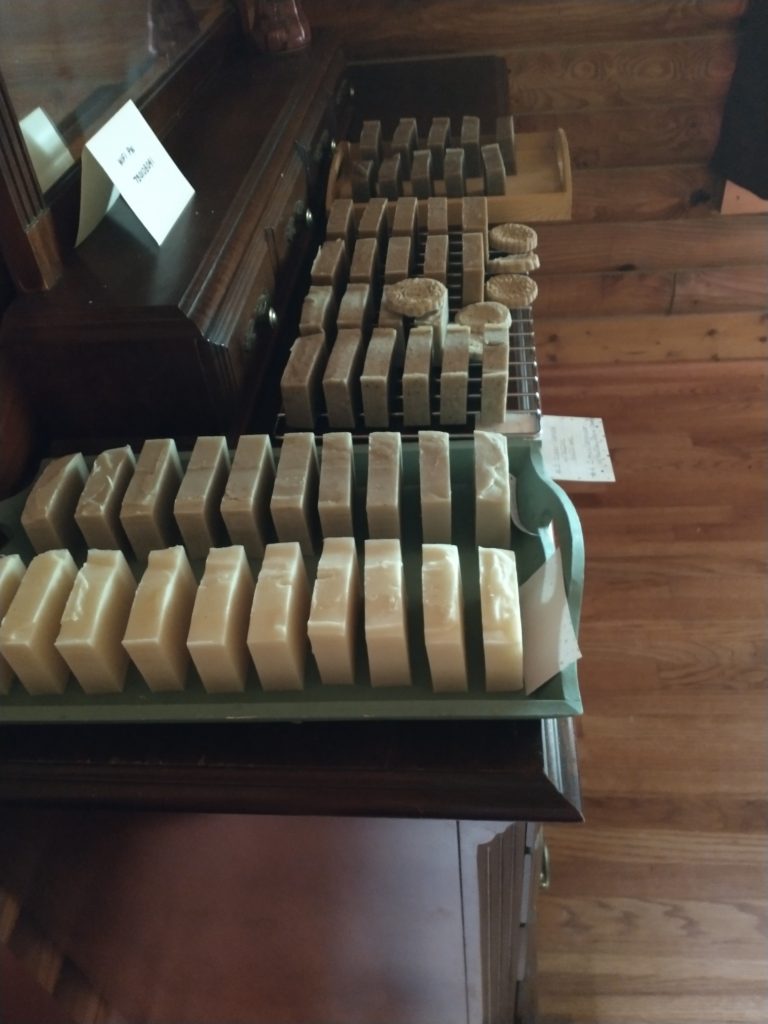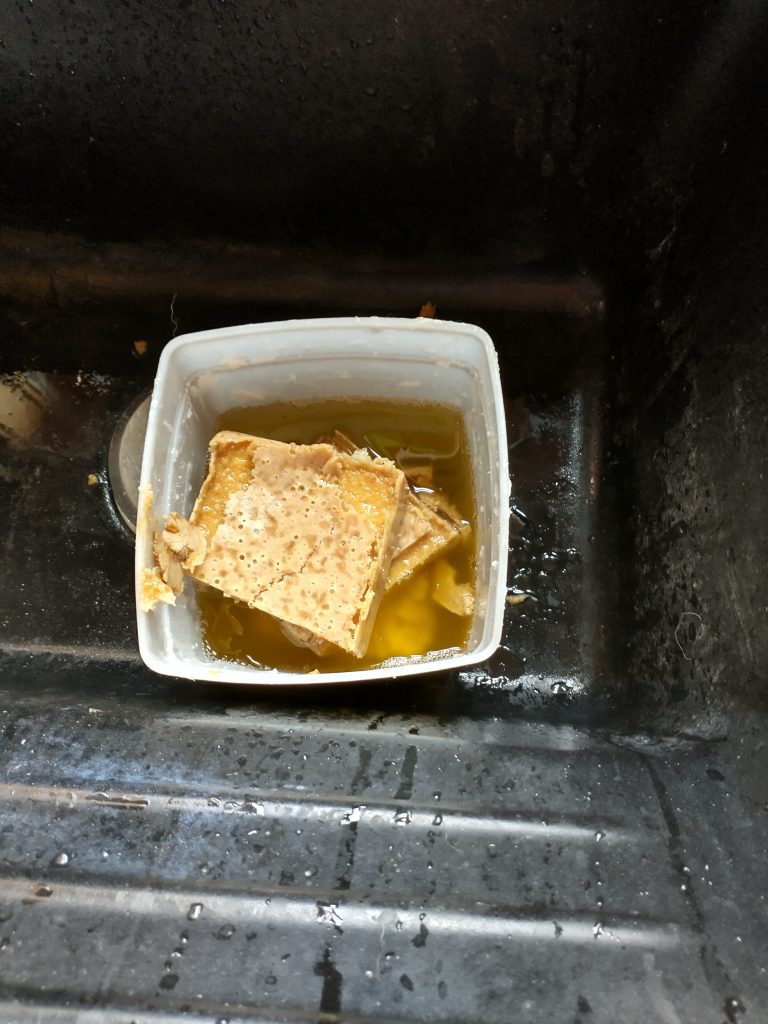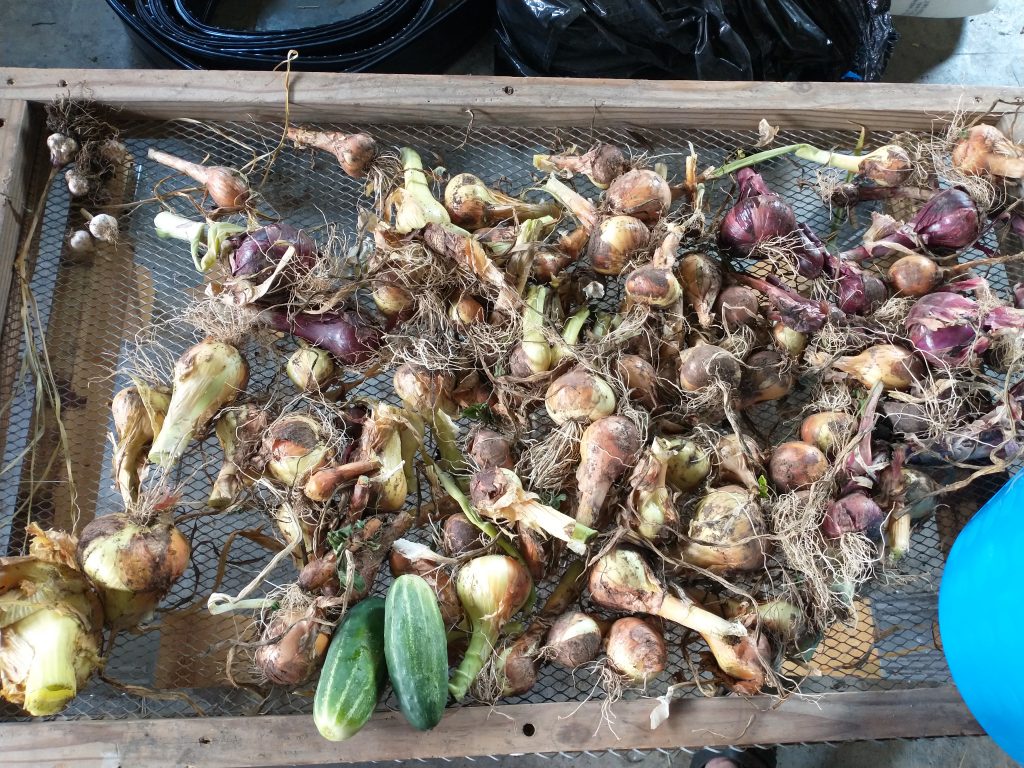I began making soap many years ago after a friend who makes great soaps offered to teach me. Have I thanked you lately, Cat? A great afternoon spent and a batch of soap to keep along with some of the necessary tools and a new skill came home with me that day. I subsequently have taught a few other folks to make soap and make sure they go home with some supplies, a batch of soap, and a new skill. I can’t count how many batches I have made at this point, but it is in the dozens. For the past three days, I have made two batches a day. I limited it to two because I wanted to use the loaf molds, not wanting to spoon soap batter into shaped molds, so I was having to wait 24 hours to unmold, wash the molds, dry them, then make two more batches. I have only had a few epic failures, one when I forgot and measured by volume instead of weight, one when I used ground cinnamon as a colorant and the soap seized, and one of yesterday’s batches for unknown reasons.


I could tell that this batch wasn’t quite right as it took forever to come to trace and even then, the consistency was off. It was a batch of Goatmilk, Oatmeal, and Honey soap. I know the goatmilk powder was old, but used it as I didn’t have any fresh milk (I have used the powder before), maybe the match between the temperature of the oil and caustic liquid were off. Whatever the reason, this batch separated and is still caustic. The container will be well wrapped in newspaper, double bagged, and disposed of, it is unsalvagable. If I want a batch of that type of soap, I will have to purchase more goatmilk. I wish I had checked it before we went to the Farmer’s Market.
All the equipment has been cleaned up to store away, it may come back out if I can get some goat milk. The equipment sits out overnight so the next day I am cleaning up soap, not caustic soap batter. It is easier on the hands and the septic system to do it that way. There are two pots, the immersion blender, a couple of plastic scrapers that get wiped down with newpaper or paper towels and allowed to saponify overnight.
Day before yesterday, I noticed the onion tops were folding down so the onions were pulled and left on the soil surface overnight. Yesterday, pop up storms were forecast, so the onions were gathered and brought into the garage to finish curing. It was a nice mix of red and yellow onions, some as large as softballs, some barely larger than the bulbs that were planted, two that were showing some stem rot were peeled, cut, and used in two subsequent dinners. Yesterday also produced the first two cucumbers. I guess pickle making will occur soon. Last year I made so many fermented and refrigerator pickles that the weight of the jars, broke the 13 year old support glides that hold the produce bin in the refrigerator. That part was ordered and I replaced it, but I guess this year, most of the pickles will be canned so they are shelf stable to keep the weight off the refrigerator shelves.

As soon as all of the stems have dried and the skins have papered, these will be moved to the basement shelves to join the garlic that was spread on the hardware cloth shelf down there yesterday.
When I began raising a few chickens for our eggs, I started with too many and ended up with a lot of randy young males, thus learning that “freezer camp” was the solution. I kept one young rooster so we could maintain a sustainable flock without having to purchase chicks and I banded their legs so we could keep track of ages with the idea of never keeping more than a dozen birds at a time. A few years ago, after having several batches of chicks hatch and all of them falling victim to predators of some sort, some as tiny chicks, some as “teenagers”, I decided to just keep females and replace them every two or three years as their egg production dropped. This was the year to replace them and “all” pullet chicks were purchased in February. By May, it was clear that two of the pullets, the two Oliver eggers were roos, not pullets. I enjoy the female birds, most are friendly and the pullets are beginning to lay small colorful eggs now, but the two young roosters are driving me crazy. A crowing rooster first thing in the morning doesn’t bother me, these two compete all day long every day. I’m ready for them to be gone. They are beautiful birds, but oh so annoying. When the pullets were reaching the point where I thought they would begin to lay eggs, I put two of the mature hens in with them to help teach them where to lay each day. When freezer camp time occurs soon, I have to get them back out of the coop and into the Palace with the roosters and other mature hens. I thought this would be easy, but they are also Olive eggers and in the coop at night, I can’t tell them apart from a couple of the Marans. They have green legs, but the Marans have black legs and they can’t be distinguished by flashlight, both have black feathers, and some of the Marans have the gold necklace. This may be a challenge, but the coop really isn’t large enough for 15 birds. It really isn’t large enough for the 13 pullets.
